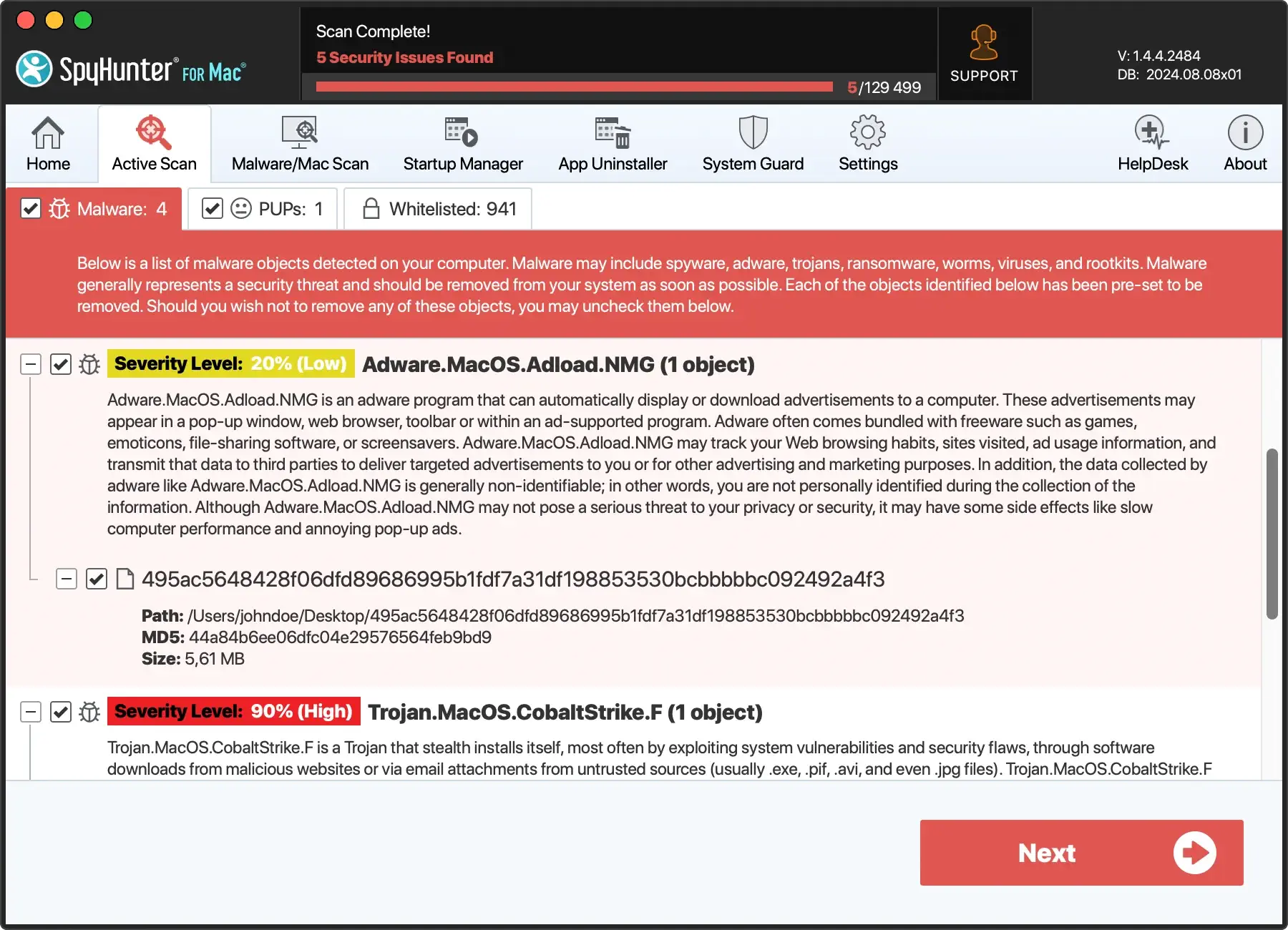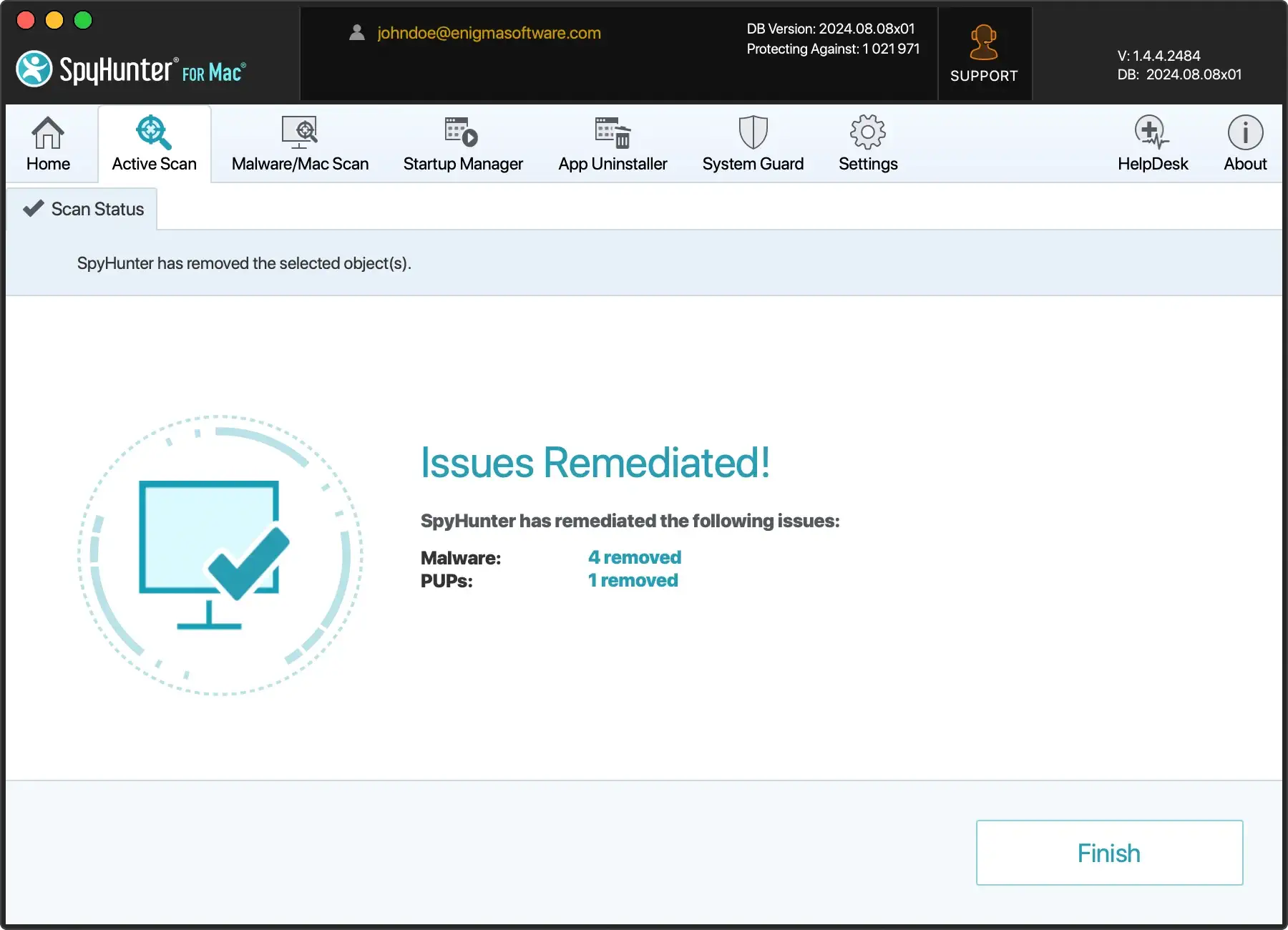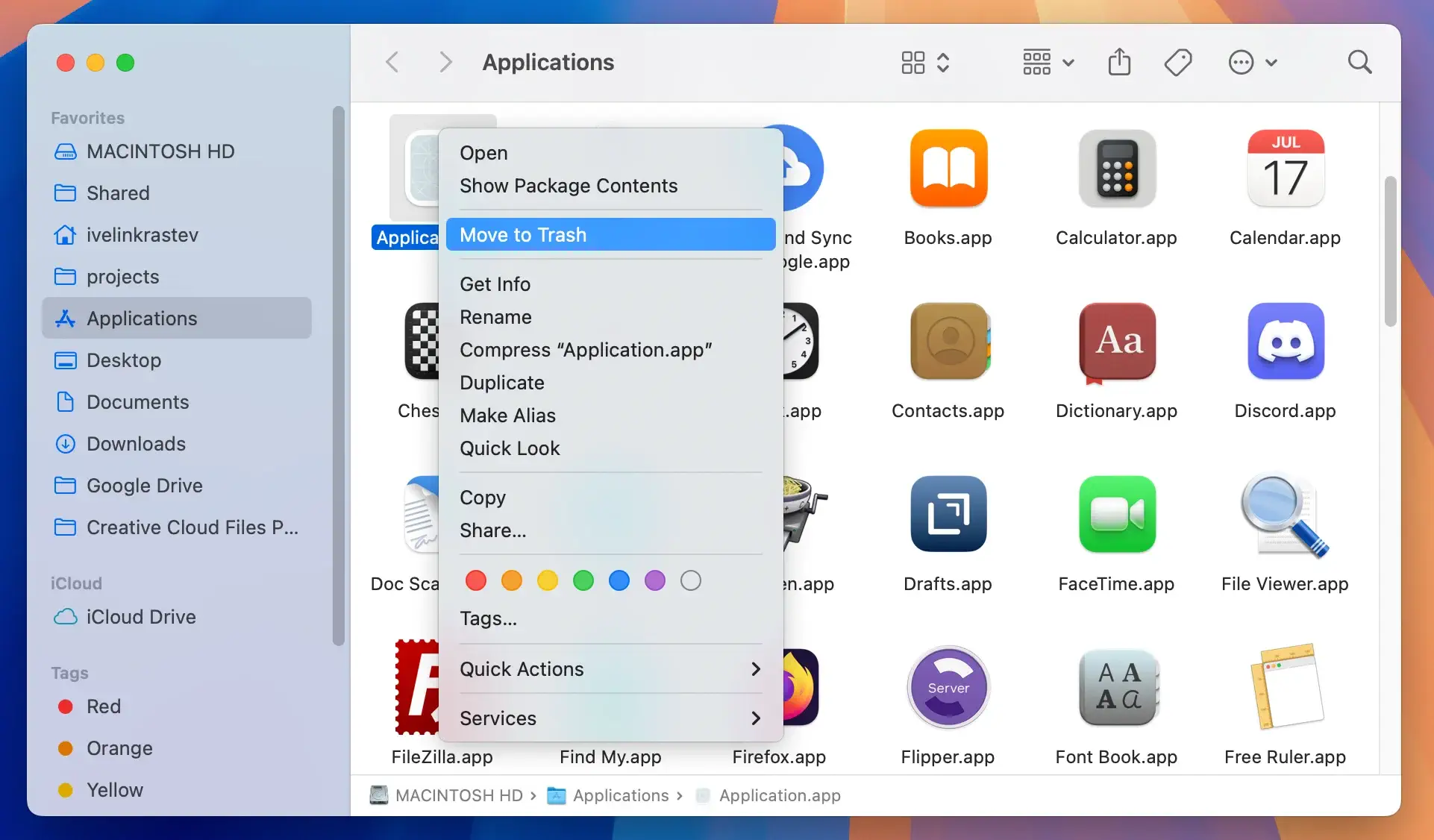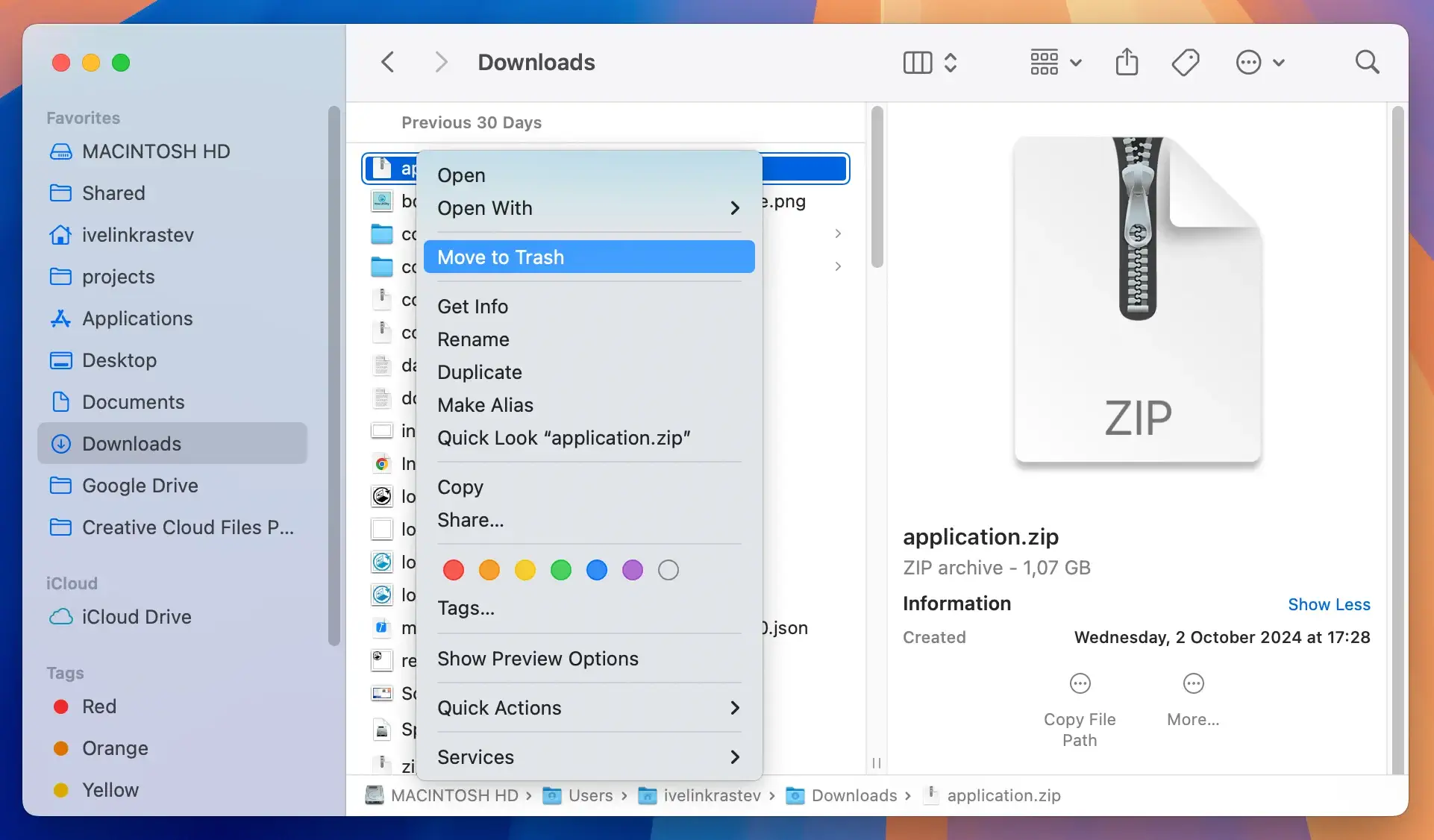How To Remove Exusnefte Hijacker On Mac (Simple Guide)
Before we dive in
Before we dive in, let's make sure you stay safe online. We created SpyHunter because your security matters to us.
Protect your computer today — download SpyHunter right here! Check out our top tips below to keep your computer safe and secure.

Ever found yourself closing pop-up ads that seem to appear out of nowhere, only for them to pop right back up?
Or maybe your computer has started to slow down for no apparent reason? If this sounds like what you’re dealing with, you might be up against the Exusnefte browser hijacker, a real headache that’s more than just annoying—it’s potentially harmful.
This guide dives into the nitty-gritty of what the Exusnefte hijacker is, how it sneaks onto your computer, and more importantly, how you can get rid of it.
What exactly is the Exusnefte browser hijacker?
Understanding the Exusnefte pop-up virus begins with recognizing its origin and purpose.
At its core, it is a form of adware that specifically targets web browsers to deliver unwanted advertisements.
These pop-up ads are not just a slight annoyance; they’re part of a larger strategy deployed by cybercriminals to exploit users for financial gain or to distribute more malware.
When a device is infected by Exusnefte, the user experiences frequent and intrusive advertisements. These aren’t ordinary ads you might encounter on the internet.

The Exusnefte pop-ups are engineered to appear even when you’re not actively browsing, disrupting your workflow and potentially leading to accidental clicks.
This behavior is a clear sign that the hijacker aims to be as obtrusive as possible, maximizing the chance that a user will interact with the content it pushes.
The ads themselves can vary widely in appearance and content. Some might masquerade as legitimate offers or warnings, tricking users into clicking them.
However, the majority lead to dubious websites offering fake products, scams, or even more malware. This tactic not only endangers the security of your personal information and device integrity but can also slow down your computer by consuming resources and causing unnecessary network traffic.
Common signs of Exusnefte infection
Unexpected pop-up ads and redirects
When dealing with the Exusnefte browser hijacker, you’re pitted against more than just a mild inconvenience.
The ads it shows are designed to take you on a detour, away from your intended online destination, to sites brimming with more ads or even phishing schemes. This not only disrupts your browsing experience but also puts your personal information at risk.
Sluggish computer performance
A sudden slowdown in your computer’s performance is a classic sign that something’s amiss.
If your once-speedy machine now drags its feet launching programs or processing tasks, it could be waving a red flag that the Exusnefte hijacker may have taken up residence.
This sluggishness often stems from the malware hogging your system’s resources, leaving little room for legitimate software to operate efficiently.
How does the Exusnefte hijacker infiltrate your system?
Understanding how the Exusnefte virus makes its way onto computers is crucial for preventing future infections.
Unwanted software downloads
One of the primary methods through which Exusnefte infiltrates systems is through unwanted software downloads.
Often, these occur when users download and install free programs from the internet without paying close attention to the installation process.
Here’s what typically happens:
- Users download a seemingly harmless program from a less reputable source.
- During installation, additional software, like the Exusnefte hijacker, is bundled in without clear consent.
- Without opting for a ‘Custom’ or ‘Advanced’ installation to deselect unwanted programs, users inadvertently install the virus along with the primary software.
To protect against such threats, always select ‘Custom’ or ‘Advanced’ installation options when available, and carefully review each step to decline any additional software you don’t want or need.
Deceptive advertisement clicks
Another common route for the Exusnefte virus to enter your system is through deceptive advertisements.
Cybercriminals cleverly design these ads to mimic legitimate alerts or offers, tricking users into clicking on them. Here’s the breakdown of how it works:
- The ad may promise an essential software update or claim to be a limited-time offer, persuading you to click.
- Once clicked, the ad can execute scripts that download the Exusnefte hijacker directly into your browser.
The best defense against deceptive ads is to avoid clicking on unsolicited offers, especially those that appear too good to be true.
Utilize ad-blocking software to minimize exposure to potential threats.
Remove Exusnefte using SpyHunter
For those who prefer a more straightforward approach or are less confident in their technical skills, using a specialized tool like SpyHunter can offer a hassle-free solution to remove the Exusnefte hijacker.
SpyHunter is designed to scan for malware and unwanted programs, including those that generate pop-up ads like Exusnefte.com.
Here’s how you can use SpyHunter to clean your system:
- Download SpyHunter here and follow the instructions on your screen to install it properly.
- Run a full system scan from the main SpyHunter menu.
- Once the scan is finished, you will see a list of all malicious or unwanted apps and files found on your Mac.

- Use the application’s interface to automatically remove all threats found.

This automated tool simplifies the virus removal process, making it accessible for users of all skill levels. By taking care of the complexities behind malware detection and removal, SpyHunter lets you focus on enjoying a clean and safe computing experience.
Step-by-step guide to remove Exusnefte
Removing browser hijackers like Exusnefte.com can be a daunting task, but with the right approach, you can clear your device of these annoying intrusions.
Step 1: Remove Exusnefte from your Applications
- Use
Finderto open yourApplicationsfolder. - Scroll through the list of apps and look for any that include Exusnefte in their name, or any that you don’t remember ever installing or using.
- Drag and drop the suspicious apps into the
Trash.

- Empty the
Trash.
Step 2: Remove leftover Exusnefte files
- Open
Finder, then click onGo > Go to Folderin the menu. - A new window will come up. Inside it, paste the following directory paths in order, hitting
Returnafter each, to examine all of them one after the other:/Library/LaunchAgents//Library/Application Support//Library/LaunchDaemons/~/Library/LaunchAgents/~/Library/Application Support/

- Locate and manually delete any files linked to Exusnefte that you find inside those locations.
- Empty the
Trashto complete this step.
Step 3: Clean your browsers from Exusnefte unwanted extensions
For Safari
Launch Safari and go to the Preferences menu. Click on the Extensions tab and remove any unfamiliar extensions, especially those named Exusnefte.
For Google Chrome
Open Chrome, click on the three dots menu in the top right corner, and go to Settings. Navigate to the Extensions page and delete any suspicious extensions.
For Firefox
Open Firefox, click the three-bar menu button, and choose Add-ons. In the window that opens, go to Extensions and remove any extensions that seem unfamiliar.
How to prevent future infections
Pop-up adware and browser hijacker infections are more than just an annoyance; they can compromise your privacy and security.
Preventing them requires a mix of vigilance and proactive measures. To start, always update your operating system and software applications regularly.
Developers often release updates to patch security vulnerabilities that could be exploited by malware.
Next, enhance your browser’s security settings. Most internet browsers offer settings that can limit pop-ups and restrict unauthorized downloads.
Familiarize yourself with these settings and adjust them according to your needs.
Be wary of free, pirated software or media content, as these are often bundled with malware. Opt to download content only from reputable websites and platforms.
Also, customize installation processes, opting for ‘custom’ or ‘advanced’ options to deselect any unwanted software bundled with the primary application you intend to install.